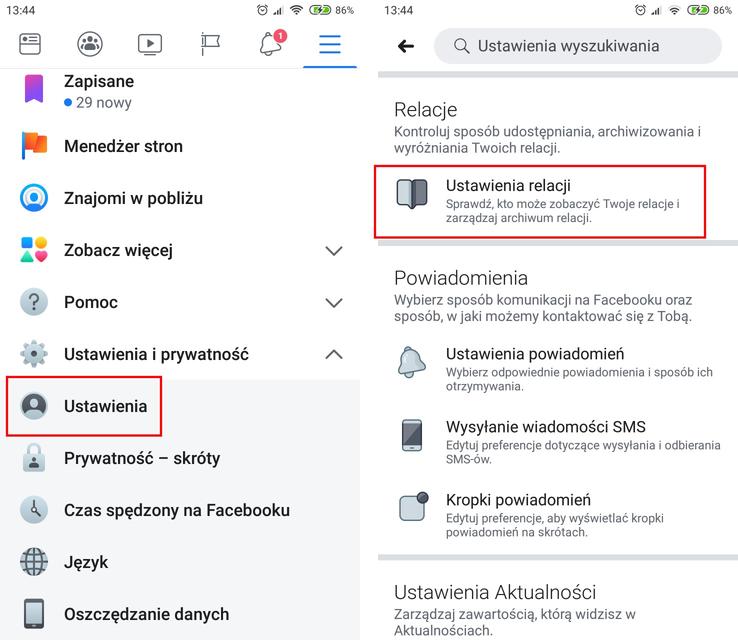Do the smartphone battery have to be used up before charging? Will RAM cleaning speed up our phone? Or maybe more megapixels in the camera will make our photos better? We deal with popular myths that circulate among users.
1. Automatic brightness settings to save battery
The truth is: In a few cases, the changes are usually slight, and sometimes this automatic brightness setting can use up our phone's battery faster. What it depends on?
If we manually set the maximum brightness of the screen and in this way we will use the phone regardless of the time of day and where we are, the power consumption will be simply very high. And in this case, the sensor that automatically reduces the brightness will not only save us the battery, but also our eyes. Otherwise, the sensor will either not give us any savings, or even increase the consumption.
Photo: ShutterstockWhen does a sensor not pay off? In full sun, when it must automatically set the highest brightness anyway. Then, apart from the screen itself, the sensor itself sending signals to the phone's processor will consume a small amount of power. It is also worth remembering that some smartphones in automatic mode can set the brightness of the image inaccessible from the level of manual selection, reaching even deeper into the battery.
So what is the best setting? There is not one right answer here. Automatic setting, when using the phone in normal conditions, should not make any significant differences in battery consumption.
2. You cannot charge the smartphone with other / more powerful chargers
The truth is: Modern smartphones are so intelligent that they can control when the current flow is too high and the battery heats up too much. In practice, this means that even with a three times more powerful charger than the one we received in the set, we can still charge our smartphone with it. Well, we can do it every day, and the battery life will not suffer from it - the controller in the phone will always use only as much electricity as it needs. Of course, as long as we use certified equipment, and not chargers purchased in China for dollars, which are a threat not only to phones, but also to the entire electrical installation in homes.
Photo: ShutterstockAlso, the constant use of fast charging does not have any negative impact on the lifetime of our device, but only saves time. On the other hand, there are cases where phones from one manufacturer refuse to work with chargers from other companies. In this case, the smartphone will simply refuse to charge, but these are only isolated cases.
Be sure to read: Fast charging, i.e. the charger is not equal to the charger
3. Use the battery completely before charging
The truth is: Yes, as long as we have a phone from ... 20 years ago. Modern batteries do not require strict adherence to any specific recommendations.
In the past, in the 1980s and 1990s, nickel-cadmium or nickel-metal hydride batteries were used, which had no memory of their own. Simply put - they did not know about their capacity and how much electricity they can still cram if we start charging when we do not use them to the end. This meant that only after reaching 0 percent. it was possible to efficiently charge the batteries to their full capacity.
Photo: ShutterstockToday things are different. Modern smartphones have lithium-ion batteries and advanced systems that control their consumption. So we can easily top up the phone at 20, 50 or even 90 percent. charge. And not necessarily to the end. What about charge cycles? This is another part of the myth that says that each connection of the phone to the charger is a separate charging cycle. Well, no - the charging cycle is one full discharge and charging of the phone, not necessarily at one time. If on the first day we use 50 percent. battery and recharge it to 100%, and the next day we will do the same, the phone will pick it up not as two, but one full charge cycle.
Paradoxically, it is much more harmful for lithium-ion batteries to fully discharge. So it is best to connect the charger at the latest when we receive a message informing about such a necessity. In some smartphones it shows up at 10 percent, in others, for example at 15 percent.
Be sure to read: TOP10 powerbanks - do not be surprised by a discharged battery

4. Before the first use, you need to form the battery
The truth is: See point above. The practice of forming a battery, i.e. discharging to zero several times and recharging to one hundred percent before proper use, applies to nickel-cadmium batteries. The myth repeats itself regularly, however, especially among older phone users.
5. The smartphone cannot be charged overnight
Photo: ShutterstockThe truth is: charging length doesn't matter today. A dozen or so years ago, we could have encountered cases of "overcharging" the battery - it is true that the physical capacity of the battery in the smartphone is slightly greater than the icon in the corner of the screen indicates. As in the case of charging with more powerful chargers, also in the case of leaving the smartphone connected to the charger, however, there are appropriate safeguards that will cut off the power supply when an appropriate level is reached. In some cases, the charger will simply stop charging the battery until we disconnect and reconnect the cable (hence in the morning the connected smartphone may have, for example, 95% charge), in other cases it will be recharged from time to time to maintain the maximum level. However, there is no danger that the phone will receive too much power.
6. Using the smartphone while it is charging will shorten the battery life
The truth is: as long as we don't use the phone like this all the time, you'll be fine. This myth is repeated sometimes when you talk about battery overheating. After all, charging heats up the battery, and using a smartphone, and especially gaming, raises the temperature of other systems. Again, however, we are breaking down about appropriate controllers that ensure that the phone does not exceed certain temperatures.
There is, however, a grain of truth in this myth regarding charging cycles, and more specifically in this case "mini-cycles". This phenomenon occurs precisely when the battery is being consumed and charged at the same time. In normal cases, it does not matter for a smartphone. It is only when we maintain this state for a very long time and use the smartphone for demanding activities (such as games), it may turn out that certain areas of the battery age faster than others because they have had more charging cycles.
7. Closing applications and freeing up RAM speeds up the operation of your smartphone
The truth is: It is quite the opposite. Here it is all about the prefix "smart" - modern phones themselves can control whether any of the applications use too much memory, which may be useful to us at a given moment for another activity. Applications running in the background will always start faster, without having to reload them into RAM.
Photo: ShutterstockYou have to remember that RAM is designed to use as much as possible at every possible moment. The more files our smartphone loads into the cache, the faster the entire device will work. Chronic RAM cleaning will only cause some of the files to be loaded again and again, wasting our time, and the space in valuable memory will remain useless. If we want to temporarily speed up the operation of the phone - it will be better, for example, to temporarily log out of services that are not currently necessary for us, e.g. from social networks or messengers.
8. Turning off the phone ends its operation
The truth is: Only some of its functions are expiring. As long as we do not cut off the power from the smartphone by removing the battery, it will work, regardless of whether it is "on" or "off". The network will constantly communicate with it, and the device will be tracked even when we remove the SIM card from it. Well, it is also possible that when the phone is turned off, it will… hear us, because the microphone may remain active. Sounds disturbing?
However, if we do not want to engage in illegal activities, we must appreciate that the switched off smartphone will still try to wake us up in the morning, turning on spontaneously at the right moment.
9. More RAM and a faster processor means a better phone
The truth is: the potential of the device and its actual performance are two different things. Will an octa-core device with 4GB of RAM be more powerful than a smartphone with four cores and 3GB of RAM? Not necessarily. Just as important as the power of the hardware is how the operating system and individual applications use it. In practice, there are many smartphones with a specification better than the iPhone, but in practice a large part of them show worse performance.
Photo: ShutterstockAnother thing is that some devices will perform better in 3D games, while other applications will run slower. Before buying a smartphone, it is worth paying attention to various tests, paying attention to the possibilities that interest us the most.
10. More megapixels in a camera mean better photos
The truth is: more megapixels in a camera mean "bigger" photos. This is one of the myths that has found its way into the marketing world and the number of megapixels in cameras is one of the most important values when competing for customers. However, it is worth bearing in mind what these megapixels actually give you and what affects the quality of the photos.
In the case of photos, when we speak of megapixels (MP), we mean the resolution of photos counted in millions of pixels. In the case of monitors and televisions, the resolution is defined by established standards, such as FullHD (1920x1080 pixels) 4K (3840x2160 pixels) etc. This means that the FullHD standard is more or less 2MP, and 4K - about 8 megapixels. So a photo taken with a 20MP camera will be much larger than the resolution of monitors, televisions, projectors, etc. used today. Not to mention the fact that many popular SLRs do great in professional tasks, offering 16 or even 8 megapixels. By the way, they can take much better photos than cameras in phones. Why?
Photo: ShutterstockIt all comes down to the fact that the number of pixels / megapixels in a camera does not mean at all the quality with which they will be recorded. The optics used in the camera, the quality and size of the matrix, as well as the software of the phone itself are responsible for this. So how do you choose a camera that takes the best photos? Here it is simply worth comparing how the smartphones work in practice. Of course, devices that take photos with very low resolution will not give a good effect, but today you rarely find smartphones with cameras below 5 megapixels.
Be sure to read: What determines the quality of the camera on a smartphone? The equipment is just the beginning
11. Updates speed up the phone
The truth is: it is different. The most striking example here are Apple devices and a loud case from a few years ago. On the occasion of the premiere of new smartphones, the company releases new software, usually also available for several generations of devices backwards. However, it has turned out many times that updating on an older device, instead of bringing a new one, slowed down the system's performance.
A jump on the cash register and an incentive to buy a new device? Not necessarily. New functions, more animations or more advanced applications simply require more powerful equipment. In such cases, we have to reckon with the fact that some updates, especially those bringing new products with the next generation of increasingly stronger models, may bring more nerves than joy. However, it should be borne in mind that along with the updates, various holes in the system are patched, which could expose our phone to external attacks.
Another thing is that after updating the phone somehow "cleans" and resets some settings. This may give you the illusion that it works a bit faster after an update is done.
12. Wi-Fi hot-spots are safe
Photo: ShutterstockThe truth is: it's better not to trust them. Hotspots, especially insecure ones, can be an information farm for hackers. If someone wants, he will be able to easily intercept packets sent and received within the open network. You should also watch out for hotspots that pretend to be public access places and are networks set up by hackers. You have to pay attention to network names and avoid connecting to suspicious points. Our attention should also be drawn to situations in which we see two networks with a similar name.
So it is better not to use banking services in open hotspots, nor send private information. However, if we want to check what's going on on Instagram, we should not worry too much about safety.
Photo: Komputer Świat

